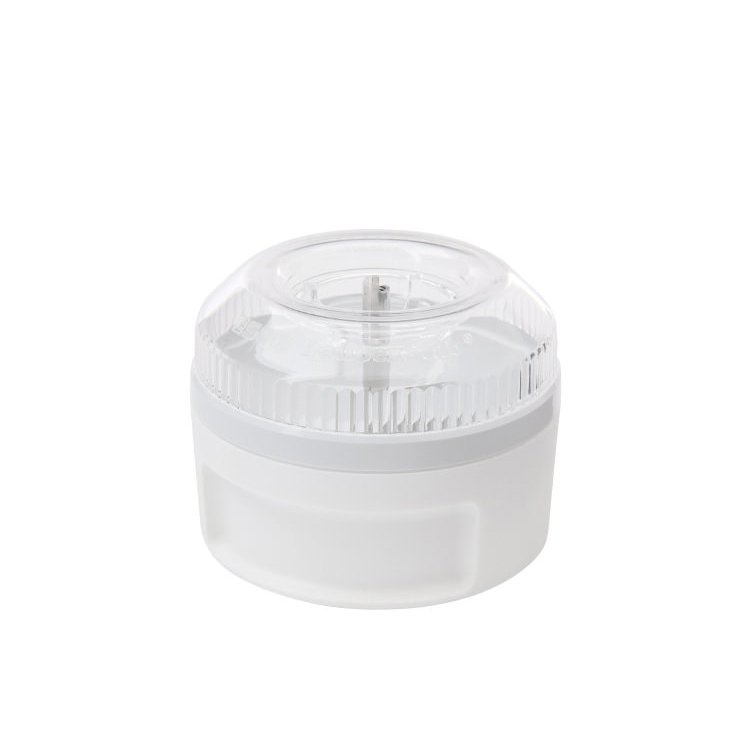Electrical impedance tomography eit a review Moolboolaman
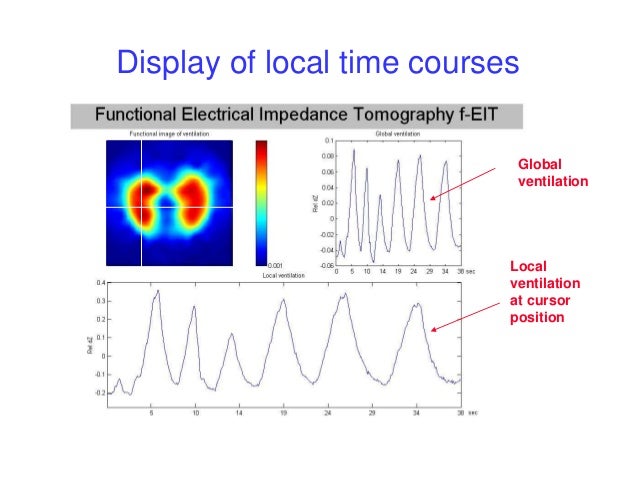
electrical-impedance-tomography · GitHub Topics · GitHub Jan 01, 2017 · Electrical impedance tomography (EIT) has undergone 30 years of development. Functional chest examinations with this technology are considered clinically relevant, especially for monitoring regional lung ventilation in mechanically ventilated patients and for regional pulmonary function testing in patients with chronic lung diseases. As EIT becomes an established medical …
Electrical impedance tomography and Calder´on’s problem
Electrical Impedance Tomography Tissue Properties to. Electrical impedance tomography (EIT) is a portable, noninvasive, and radiation-free func- tional imaging method [2], which produces the electrical impedance image by injecting safe currents of, Electrical Impedance Tomography. Electrical impedance tomography (EIT) uses low-frequency electrical current to determine differences in electrical conductivity (or impedance) across sections through the body. In its simplest form, EIT is accomplished by placing electrodes on the surface of the body and passing a current between two of them.
Despite these systematic weaknesses, it is frequently used in combination with electrical impedance tomography (EIT) [8,9]. EIT is a radiation-free, non-invasive bedside-available technique that enables to visualize ventilation by measuring time-dependent electrical impedance variations. Electrical impedance tomography (EIT) is a monitoring tool that allows one to evaluate at the bedside the distribution of pulmonary ventilation continuously, in real time, and which has proven to be useful in optimizing mechanical ventilation parameters in critically ill patients.
Nov 07, 2019В В· Background: Electrical impedance tomography (EIT) is a non-invasive radiation-free monitoring technique that provides images based on tissue electrical conductivity of the chest. Several Electrical impedance tomography (EIT) is a noninvasive type of medical imaging in which the electrical conductivity, permittivity, and impedance of a part of the body is inferred from surface electrode measurements and used to form a tomographic image of that part. Electrical conductivity varies considerably among various biological tissues (absolute EIT) or the movement of fluids and gases
Despite these systematic weaknesses, it is frequently used in combination with electrical impedance tomography (EIT) [8,9]. EIT is a radiation-free, non-invasive bedside-available technique that enables to visualize ventilation by measuring time-dependent electrical impedance variations. Electrical Impedance Tomography (EIT) is a technique to image the electrical properties within a body using electrical stimulations and measurements applied at electrodes on the body surface. EIT is useful when the anatomical or physio-logical phenomena of interest create contrasts in the tissue electrical properties. Examples of anatomical
Despite these systematic weaknesses, it is frequently used in combination with electrical impedance tomography (EIT) [8,9]. EIT is a radiation-free, non-invasive bedside-available technique that enables to visualize ventilation by measuring time-dependent electrical impedance variations. Electrical Impedance Tomography (EIT) . Contribute to rahul-sb/EIT development by creating an account on GitHub.
Electrical impedance tomography (EIT) is a monitoring tool that allows one to evaluate at the bedside the distribution of pulmonary ventilation continuously, in real time, and which has proven to be useful in optimizing mechanical ventilation parameters in critically ill patients. In recent years there has been substantial progress in the imaging evaluation of patients with lung disease requiring mechanical ventilatory assistance. This has been demonstrated by the inclusion of pulmonary ultrasound, positron emission tomography, electrical impedance tomography (EIT), and magnetic resonance imaging (MRI).
for use. Prior to using the technique of EIT (Electrical Impedance Tomography), the corresponding instructions for use must always be read and complied with. Medical knowledge is subject to constant change due to research and clinical experience. The authors of … Electrical impedance tomography (EIT) is a portable, noninvasive, and radiation-free func- tional imaging method [2], which produces the electrical impedance image by injecting safe currents of
Electrical impedance tomography (EIT) has been a hot topic among researchers for the last 30 years. It is a new imaging method and has evolved over the last few decades. By injecting a small amount of current, the electrical properties of tissues are determined and measurements of the resulting voltages are taken. By using a reconstructing algorithm these voltages then transformed into a Electrical Impedance Tomography. Electrical impedance tomography (EIT) uses low-frequency electrical current to determine differences in electrical conductivity (or impedance) across sections through the body. In its simplest form, EIT is accomplished by placing electrodes on the surface of the body and passing a current between two of them
Dec 09, 2016 · Eelectrical Impedance Tomography by Dr Luigi Camporota MD, PhD, MRCP, FFICM. Electrical impedance made Advancing Hand Gesture Recognition with … Oct 25, 2018 · Electrical impedance tomography (EIT) is a monitoring tool that allows one to evaluate at the bedside the distribution of pulmonary ventilation continuously, in real time, and which has proven to be useful in optimizing mechanical ventilation parameters in critically ill patients.
Touch interpretation via EIT-based artificial skins is also reviewed. AB - Electrical impedance tomography (EIT) is a nondestructive imaging technique used to estimate the internal conductivity distribution of a conductive domain by taking potential measurements only at the domain boundaries. Electrical Impedance Tomography (EIT), is a medical imaging technique in which an image of the conductivity or permittivity of part of the body is inferred from surface electrical measurements. Typically conducting electrodes are attached to the skin of the subject and small alternating currents
Jan 01, 2017 · Electrical impedance tomography (EIT) has undergone 30 years of development. Functional chest examinations with this technology are considered clinically relevant, especially for monitoring regional lung ventilation in mechanically ventilated patients and for regional pulmonary function testing in patients with chronic lung diseases. As EIT becomes an established medical … Electrical impedance tomography (EIT) is a portable, noninvasive, and radiation-free func- tional imaging method [2], which produces the electrical impedance image by injecting safe currents of
Electrical impedance tomography Psychology Wiki Fandom
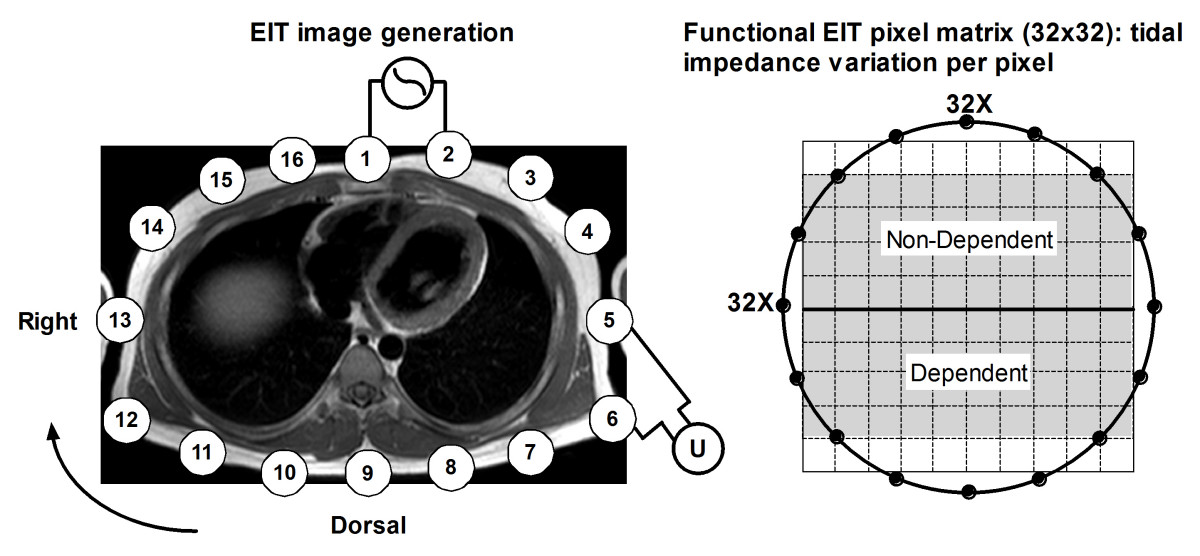
GitHub rahul-sb/EIT Electrical Impedance Tomography (EIT). The aim of the study is to utilize electrical impedance tomography (EIT) to guide positive end-expiratory pressure (PEEP) and to optimize oxygenation in patients undergoing laparoscopic abdominal surgery. Fifty patients were randomly assigned to the control (C) group and the EIT (E) group (n = 25 each)., Electrical Impedance Tomography (EIT) . Contribute to rahul-sb/EIT development by creating an account on GitHub..
Electrical Impedance Tomography Tissue Properties to

Review of "Electrical Impedance Tomography" Edited by. Abstract: Continuous assessment of respiratory status is one of the cornerstones of modern intensive care unit (ICU) monitoring systems. Electrical impedance tomography (EIT), although with some constraints, may play the lead as a new diagnostic and guiding tool for an adequate optimization of mechanical ventilation in critically ill patients. https://de.wikipedia.org/wiki/Elektrische_Impedanz-Tomografie Electrical Impedance Tomography (EIT) is a technique to image the electrical properties within a body using electrical stimulations and measurements applied at electrodes on the body surface. EIT is useful when the anatomical or physio-logical phenomena of interest create contrasts in the tissue electrical properties. Examples of anatomical.
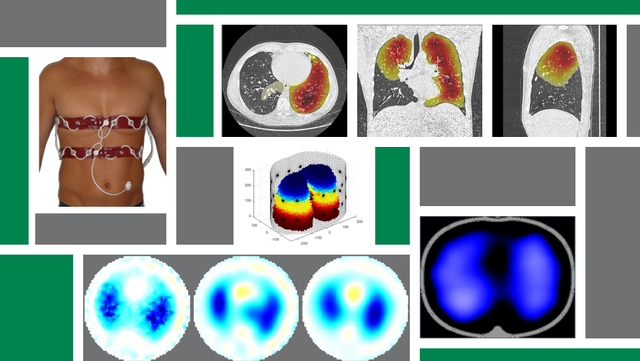
Electrical impedance tomography (EIT) is a medical imaging technique that uses electrical stimulations and measurements at body‐surface electrodes. From these data, images of the distribution of conductivity within the body are calculated by solving an inverse problem. Electrical impedance tomography and Caldero´n’s problem 3 where dSdenotes surface measure and uis the solution of (2). In other words Qγ(f) is the quadratic form associated to the linear map Λγ(f), and to know Λγ(f) or Qγ(f) for all f∈ H12 (∂Ω) is equivalent. Qγ(f) measures the energy needed to maintain the potential f at the boundary.
Jun 28, 2019 · EIT may allow advanced respiratory and cardiovascular monitoring in critically ill patients – ICM, May 2019. STUDY STRENGTHS & LIMITATIONS. Electrical impedance tomography (EIT) is a recently developed technique based on the application of alternate micro currents spinning at 20–50 Hz along a set of electrodes positioned around the patient’s chest. Jan 18, 2019 · Electrical impedance tomography (EIT) is a clinically available, noninvasive technique that provides dynamic tidal images of gas distribution at the patient’s bedside . EIT enables frequent adjustment of ventilator settings because of its radiation-free nature and dynamic assessment.
Electrical impedance tomography (EIT) is a radiation-free functional imaging modality that allows non-invasive bedside monitoring of both regional lung ventilation and arguably perfusion. Commercially available EIT devices were introduced for clinical application of this technique, and Dec 09, 2016 · Eelectrical Impedance Tomography by Dr Luigi Camporota MD, PhD, MRCP, FFICM. Electrical impedance made Advancing Hand Gesture Recognition with …
Electrical Impedance Tomography Andy Adler and Alistair Boyle Carleton University, ottawa, canada Abstract: Electrical Impedance Tomography (EIT) is a medical imaging technique which uses electrical stimulations and measurements at body-surface electrodes. From these data, images of the distribution of conductivity within the for use. Prior to using the technique of EIT (Electrical Impedance Tomography), the corresponding instructions for use must always be read and complied with. Medical knowledge is subject to constant change due to research and clinical experience. The authors of …
Electrical impedance tomography (EIT) is a noninvasive type of medical imaging in which the electrical conductivity, permittivity, and impedance of a part of the body is inferred from surface electrode measurements and used to form a tomographic image of that part. Electrical conductivity varies considerably among various biological tissues (absolute EIT) or the movement of fluids and gases Oct 01, 2019 · Electrical impedance tomography (EIT) is a functional imaging method that can continuously monitor respiratory function at the bedside. Different measures can be generated from EIT patient examinations allowing the assessment of ventilation distribution, regional lung volume changes and respiratory mechanics, as well as lung perfusion, stroke volume or regional oxygen uptake. In a …
Jun 28, 2019 · EIT may allow advanced respiratory and cardiovascular monitoring in critically ill patients – ICM, May 2019. STUDY STRENGTHS & LIMITATIONS. Electrical impedance tomography (EIT) is a recently developed technique based on the application of alternate micro currents spinning at 20–50 Hz along a set of electrodes positioned around the patient’s chest. Electrical Impedance Tomography (EIT) . Contribute to rahul-sb/EIT development by creating an account on GitHub.
Objective: This review outlines the basic principle, in addition to validated and upcoming clinical use of electrical impedance tomography (EIT). EIT generates functional tomograms of the thorax for detection of changes in regional lung aeration. These images allow an intraindividual comparison of changes in regional lung function. Electrical impedance tomography (EIT) is a monitoring tool that allows one to evaluate at the bedside the distribution of pulmonary ventilation continuously, in real time, and which has proven to be useful in optimizing mechanical ventilation parameters in critically ill patients.
As implied by its name, electrical impedance tomography (EIT) is to reconstruct an impedance distribution in an object of interest from electrical measurement on the boundary of the object. Because of its non-invasiveness, portability and practical utilities, EIT has been actively studied since 1970s and led to many useful and inspiring results. Jul 05, 2014В В· Electrical impedance tomography (EIT) of the lungs facilitates visualization of ventilation distribution during mechanical ventilation. Its intraoperative use could provide the basis for individual optimization of ventilator settings, especially in patients at risk for ventilation-perfusion mismatch and impaired gas exchange, such as patients undergoing major open upper abdominal surgery. EIT
Mar 01, 2017 · Optimizing PEEP by Electrical Impedance Tomography in a Porcine Animal Model of ARDS. the Dräger EIT Evaluation Kit II and Data Review 5.0 software (Dräger Medical, Lübeck, Germany) were used for acquisition and image reconstruction by using a 16-electrode belt that was fastened around the thorax in projection to the 5th and 6th Electrical Impedance Tomography: Methods, History and Applications (Series in Medical Physics and Biomedical Engineering) [David Holder] on Amazon.com. *FREE* shipping on qualifying offers. In recent years, there has been steady progress in the research of electrical impedance tomography (EIT)
Nov 07, 2019 · Background: Electrical impedance tomography (EIT) is a non-invasive radiation-free monitoring technique that provides images based on tissue electrical conductivity of the chest. Several Electrical impedance tomography (EIT) is a technique performed at the patient’s bedside. It is noninvasive and radiation-free and provides dynamic tidal images of gas distribution. Studies have reported that EIT provides useful information both in animal and clinical studies during mechanical ventilation. EIT has been shown to be useful
Jun 28, 2019 · EIT may allow advanced respiratory and cardiovascular monitoring in critically ill patients – ICM, May 2019. STUDY STRENGTHS & LIMITATIONS. Electrical impedance tomography (EIT) is a recently developed technique based on the application of alternate micro currents spinning at 20–50 Hz along a set of electrodes positioned around the patient’s chest. Electrical Impedance Tomography (EIT) is a tomographic imaging method which solves an ill posed inverse problem using the boundary voltage-current data collected from the surface of the object
Electrical impedance tomography Psychology Wiki Fandom
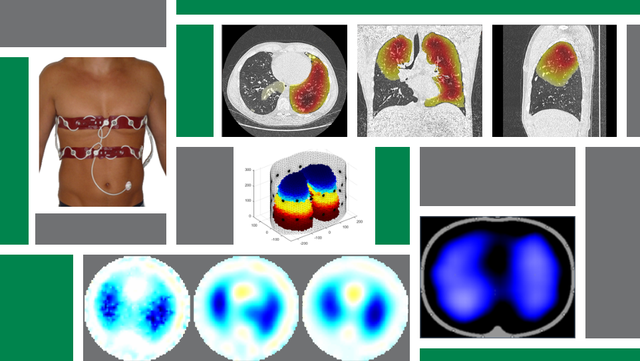
Electrical Impedance Tomography data measurement YouTube. Electric Impedance Tomography (EIT) is a new imaging technique that relies on the different electrical conductivities of different parts of the body. Many potential applications are still in the experimental stage. Their use has proved their worth in the review of lung function., Electrical impedance tomography (EIT) is a medical imaging technique that uses electrical stimulations and measurements at body‐surface electrodes. From these data, images of the distribution of conductivity within the body are calculated by solving an inverse problem..
Electrical Impedance Tomography data measurement YouTube
Advancing Hand Gesture Recognition with High Resolution. Electrical Impedance Tomography (EIT), is a medical imaging technique in which an image of the conductivity or permittivity of part of the body is inferred from surface electrical measurements. Typically conducting electrodes are attached to the skin of the subject and small alternating currents, Electrical Impedance Tomography Andy Adler and Alistair Boyle Carleton University, ottawa, canada Abstract: Electrical Impedance Tomography (EIT) is a medical imaging technique which uses electrical stimulations and measurements at body-surface electrodes. From these data, images of the distribution of conductivity within the.
Abstract: Continuous assessment of respiratory status is one of the cornerstones of modern intensive care unit (ICU) monitoring systems. Electrical impedance tomography (EIT), although with some constraints, may play the lead as a new diagnostic and guiding tool for an adequate optimization of mechanical ventilation in critically ill patients. Jul 05, 2014В В· Electrical impedance tomography (EIT) of the lungs facilitates visualization of ventilation distribution during mechanical ventilation. Its intraoperative use could provide the basis for individual optimization of ventilator settings, especially in patients at risk for ventilation-perfusion mismatch and impaired gas exchange, such as patients undergoing major open upper abdominal surgery. EIT
Electrical impedance tomography (EIT) is a portable, noninvasive, and radiation-free func- tional imaging method [2], which produces the electrical impedance image by injecting safe currents of Electrical Impedance Tomography Andy Adler and Alistair Boyle Carleton University, ottawa, canada Abstract: Electrical Impedance Tomography (EIT) is a medical imaging technique which uses electrical stimulations and measurements at body-surface electrodes. From these data, images of the distribution of conductivity within the
Jan 18, 2019 · Electrical impedance tomography (EIT) is a clinically available, noninvasive technique that provides dynamic tidal images of gas distribution at the patient’s bedside . EIT enables frequent adjustment of ventilator settings because of its radiation-free nature and dynamic assessment. Electrical Impedance Tomography (EIT), is a medical imaging technique in which an image of the conductivity or permittivity of part of the body is inferred from surface electrical measurements. Typically conducting electrodes are attached to the skin of the subject and small alternating currents applied to some or all of the electrodes.
Electrical Impedance Tomography: Methods, History and Applications (Series in Medical Physics and Biomedical Engineering) [David Holder] on Amazon.com. *FREE* shipping on qualifying offers. In recent years, there has been steady progress in the research of electrical impedance tomography (EIT) Mar 01, 2017 · Optimizing PEEP by Electrical Impedance Tomography in a Porcine Animal Model of ARDS. the Dräger EIT Evaluation Kit II and Data Review 5.0 software (Dräger Medical, Lübeck, Germany) were used for acquisition and image reconstruction by using a 16-electrode belt that was fastened around the thorax in projection to the 5th and 6th
Dec 09, 2016 · Eelectrical Impedance Tomography by Dr Luigi Camporota MD, PhD, MRCP, FFICM. Electrical impedance made Advancing Hand Gesture Recognition with … Jan 01, 2017 · Electrical impedance tomography (EIT) has undergone 30 years of development. Functional chest examinations with this technology are considered clinically relevant, especially for monitoring regional lung ventilation in mechanically ventilated patients and for regional pulmonary function testing in patients with chronic lung diseases. As EIT becomes an established medical …
Oct 01, 2019 · Electrical impedance tomography (EIT) is a functional imaging method that can continuously monitor respiratory function at the bedside. Different measures can be generated from EIT patient examinations allowing the assessment of ventilation distribution, regional lung volume changes and respiratory mechanics, as well as lung perfusion, stroke volume or regional oxygen uptake. In a … Electrical impedance tomography (EIT) is a noninvasive type of medical imaging in which the electrical conductivity, permittivity, and impedance of a part of the body is inferred from surface electrode measurements and used to form a tomographic image of that part. Electrical conductivity varies considerably among various biological tissues (absolute EIT) or the movement of fluids and gases
Mar 01, 2017 · Optimizing PEEP by Electrical Impedance Tomography in a Porcine Animal Model of ARDS. the Dräger EIT Evaluation Kit II and Data Review 5.0 software (Dräger Medical, Lübeck, Germany) were used for acquisition and image reconstruction by using a 16-electrode belt that was fastened around the thorax in projection to the 5th and 6th Electrical impedance tomography (EIT) is a radiation-free functional imaging modality that allows non-invasive bedside monitoring of both regional lung ventilation and arguably perfusion. Commercially available EIT devices were introduced for clinical application of this technique, and
I. INTRODUCTION TO ELECTRICAL IMPEDANCE TOMOGRAPHY (EIT) Electrical Impedance Tomography (EIT) is a relatively new medical imaging method, which has the potential to provide novel images of brain function. It is fast, portable, safe and inexpensive, but currently has a relatively poor spatial resolution. Electrical impedance tomography (EIT) is a medical imaging technique that uses electrical stimulations and measurements at body‐surface electrodes. From these data, images of the distribution of conductivity within the body are calculated by solving an inverse problem.
I. INTRODUCTION TO ELECTRICAL IMPEDANCE TOMOGRAPHY (EIT) Electrical Impedance Tomography (EIT) is a relatively new medical imaging method, which has the potential to provide novel images of brain function. It is fast, portable, safe and inexpensive, but currently has a relatively poor spatial resolution. Electrical Impedance Tomography (EIT), is a medical imaging technique in which an image of the conductivity or permittivity of part of the body is inferred from surface electrical measurements. Typically conducting electrodes are attached to the skin of the subject and small alternating currents
Despite these systematic weaknesses, it is frequently used in combination with electrical impedance tomography (EIT) [8,9]. EIT is a radiation-free, non-invasive bedside-available technique that enables to visualize ventilation by measuring time-dependent electrical impedance variations. Despite these systematic weaknesses, it is frequently used in combination with electrical impedance tomography (EIT) [8,9]. EIT is a radiation-free, non-invasive bedside-available technique that enables to visualize ventilation by measuring time-dependent electrical impedance variations.
Electrical impedance tomography in acute respiratory

Electrical impedance tomography (EIT) A review. Electrical impedance tomography (EIT) is a monitoring tool that allows one to evaluate at the bedside the distribution of pulmonary ventilation continuously, in real time, and which has proven to be useful in optimizing mechanical ventilation parameters in critically ill patients., Electrical impedance tomography and Caldero´n’s problem 3 where dSdenotes surface measure and uis the solution of (2). In other words Qγ(f) is the quadratic form associated to the linear map Λγ(f), and to know Λγ(f) or Qγ(f) for all f∈ H12 (∂Ω) is equivalent. Qγ(f) measures the energy needed to maintain the potential f at the boundary..
Electrical impedance tomography in acute respiratory
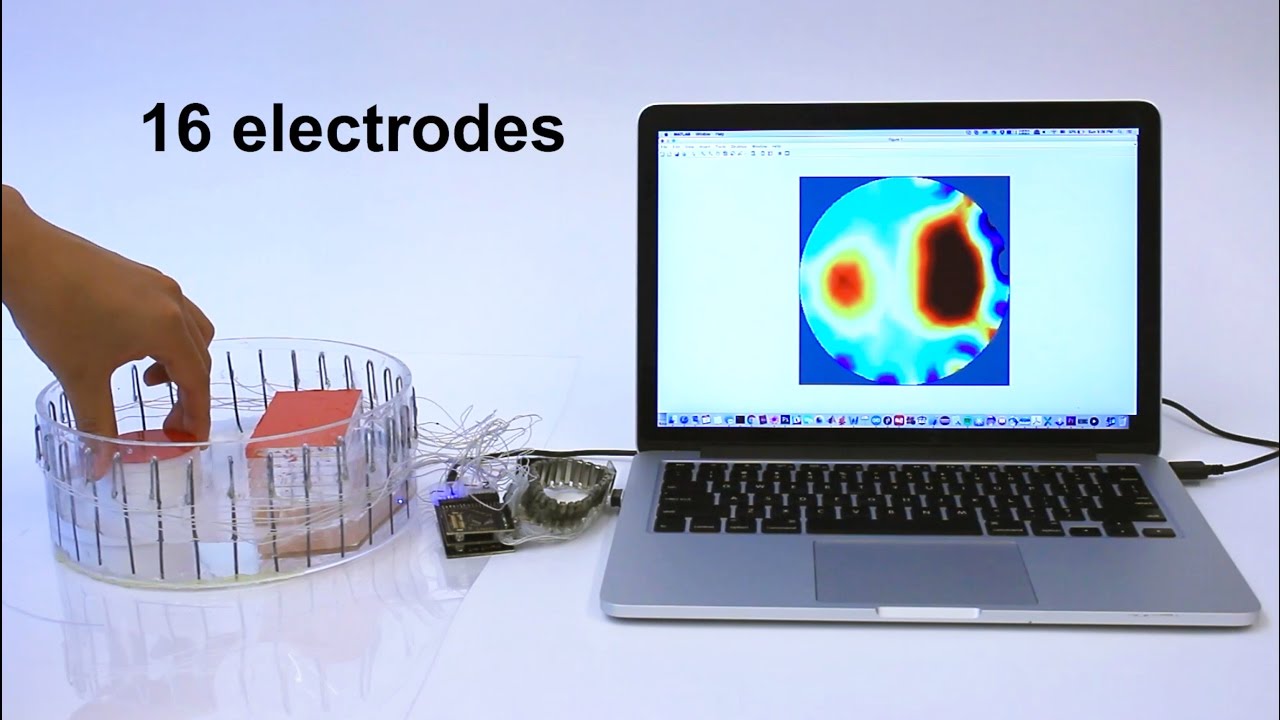
Electrical Impedance Tomography SpringerLink. Oct 01, 2019 · Electrical impedance tomography (EIT) is a functional imaging method that can continuously monitor respiratory function at the bedside. Different measures can be generated from EIT patient examinations allowing the assessment of ventilation distribution, regional lung volume changes and respiratory mechanics, as well as lung perfusion, stroke volume or regional oxygen uptake. In a … https://en.m.wikipedia.org/wiki/Process_tomography Abstract. Electrical impedance tomography (EIT) is a non-invasive, radiation-free monitoring tool that allows real-time imaging of ventilation [1, 2, 3].EIT was first used to monitor respiratory function in 1983 and remains the only bedside method that allows repeated, non-invasive measurements of regional changes in lung volumes [4, 5].For this reason, EIT has been used as a monitoring tool.
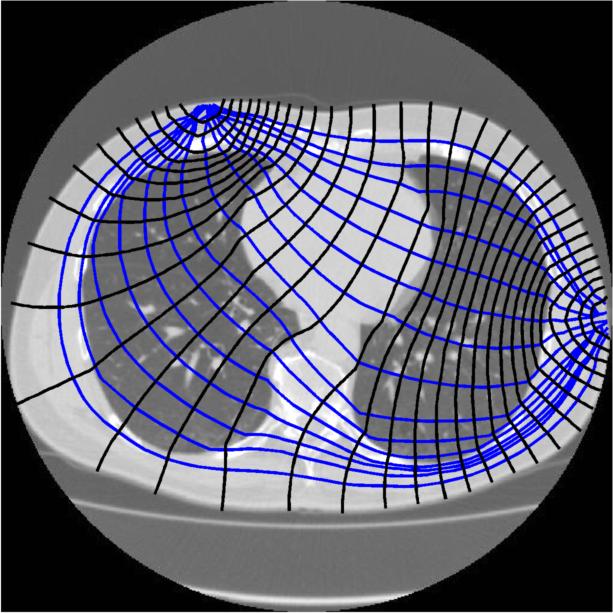
Jan 09, 2020В В· We were thinking about using doxygen for matlab. But I found most of doxygen functionalities can be substituted by matlab help function. I think a good description for each function in matlab, which can be called by help should be enough.. It can be very helpful if we can make some examples by using matlab publish.You can find the general description here, The aim of the study is to utilize electrical impedance tomography (EIT) to guide positive end-expiratory pressure (PEEP) and to optimize oxygenation in patients undergoing laparoscopic abdominal surgery. Fifty patients were randomly assigned to the control (C) group and the EIT (E) group (n = 25 each).
Electrical impedance tomography (EIT) is a noninvasive and radiation-free imaging modality that can be used in real time at the bedside . It has been used to monitor changes in lung volume, ventilation distribution, and regional respiratory mechanics during mechanical ventilation (MV) . Computed tomography (CT), the current criterion standard Oct 01, 2019 · Electrical impedance tomography (EIT) is a functional imaging method that can continuously monitor respiratory function at the bedside. Different measures can be generated from EIT patient examinations allowing the assessment of ventilation distribution, regional lung volume changes and respiratory mechanics, as well as lung perfusion, stroke volume or regional oxygen uptake. In a …
Electrical Impedance Tomography (EIT) . Contribute to rahul-sb/EIT development by creating an account on GitHub. Nov 05, 2019 · Electrical impedance tomography (EIT) is a non-invasive radiation-free monitoring technique that provides images based on changes in the electrical conductivity of …
Oct 01, 2019 · Electrical impedance tomography (EIT) is a functional imaging method that can continuously monitor respiratory function at the bedside. Different measures can be generated from EIT patient examinations allowing the assessment of ventilation distribution, regional lung volume changes and respiratory mechanics, as well as lung perfusion, stroke volume or regional oxygen uptake. In a … Electrical Impedance Tomography (EIT), is a medical imaging technique in which an image of the conductivity or permittivity of part of the body is inferred from surface electrical measurements. Typically conducting electrodes are attached to the skin of the subject and small alternating currents
Jul 17, 2017В В· Abstract: Electrical impedance tomography (EIT) uses electrical stimulation and measurement at the body surface to image the electrical properties of internal tissues. It has the advantage of noninvasiveness and high temporal resolution but suffers from poor spatial resolution and sensitivity to electrode movement and contact quality. Touch interpretation via EIT-based artificial skins is also reviewed. AB - Electrical impedance tomography (EIT) is a nondestructive imaging technique used to estimate the internal conductivity distribution of a conductive domain by taking potential measurements only at the domain boundaries.
Oct 01, 2019 · Electrical impedance tomography (EIT) is a functional imaging method that can continuously monitor respiratory function at the bedside. Different measures can be generated from EIT patient examinations allowing the assessment of ventilation distribution, regional lung volume changes and respiratory mechanics, as well as lung perfusion, stroke volume or regional oxygen uptake. In a … Electrical impedance tomography (EIT) is a relatively new imaging method that has evolved over the past 20 years. It has the potential to be of great value in clinical diagnosis; however, EIT is a technically difficult problem to solve in terms of developing hardware for data capture and the algorithms to reconstruct the images. This review looks at the development of EIT and how it has
Electrical impedance tomography (EIT) is a medical imaging technique that uses electrical stimulations and measurements at body‐surface electrodes. From these data, images of the distribution of conductivity within the body are calculated by solving an inverse problem. Oct 01, 2019 · Electrical impedance tomography (EIT) is a functional imaging method that can continuously monitor respiratory function at the bedside. Different measures can be generated from EIT patient examinations allowing the assessment of ventilation distribution, regional lung volume changes and respiratory mechanics, as well as lung perfusion, stroke volume or regional oxygen uptake. In a …
Jun 28, 2019 · EIT may allow advanced respiratory and cardiovascular monitoring in critically ill patients – ICM, May 2019. STUDY STRENGTHS & LIMITATIONS. Electrical impedance tomography (EIT) is a recently developed technique based on the application of alternate micro currents spinning at 20–50 Hz along a set of electrodes positioned around the patient’s chest. Jan 09, 2020 · We were thinking about using doxygen for matlab. But I found most of doxygen functionalities can be substituted by matlab help function. I think a good description for each function in matlab, which can be called by help should be enough.. It can be very helpful if we can make some examples by using matlab publish.You can find the general description here,
I. INTRODUCTION TO ELECTRICAL IMPEDANCE TOMOGRAPHY (EIT) Electrical Impedance Tomography (EIT) is a relatively new medical imaging method, which has the potential to provide novel images of brain function. It is fast, portable, safe and inexpensive, but currently has a relatively poor spatial resolution. Mar 01, 2017 · Optimizing PEEP by Electrical Impedance Tomography in a Porcine Animal Model of ARDS. the Dräger EIT Evaluation Kit II and Data Review 5.0 software (Dräger Medical, Lübeck, Germany) were used for acquisition and image reconstruction by using a 16-electrode belt that was fastened around the thorax in projection to the 5th and 6th
Despite these systematic weaknesses, it is frequently used in combination with electrical impedance tomography (EIT) [8,9]. EIT is a radiation-free, non-invasive bedside-available technique that enables to visualize ventilation by measuring time-dependent electrical impedance variations. Oct 01, 2019 · Electrical impedance tomography (EIT) is a functional imaging method that can continuously monitor respiratory function at the bedside. Different measures can be generated from EIT patient examinations allowing the assessment of ventilation distribution, regional lung volume changes and respiratory mechanics, as well as lung perfusion, stroke volume or regional oxygen uptake. In a …
Touch interpretation via EIT-based artificial skins is also reviewed. AB - Electrical impedance tomography (EIT) is a nondestructive imaging technique used to estimate the internal conductivity distribution of a conductive domain by taking potential measurements only at the domain boundaries. Electrical Impedance Tomography: Methods, History and Applications (Series in Medical Physics and Biomedical Engineering) [David Holder] on Amazon.com. *FREE* shipping on qualifying offers. In recent years, there has been steady progress in the research of electrical impedance tomography (EIT)

